Real Evidence for Time Travel
A Journey into the Unknown
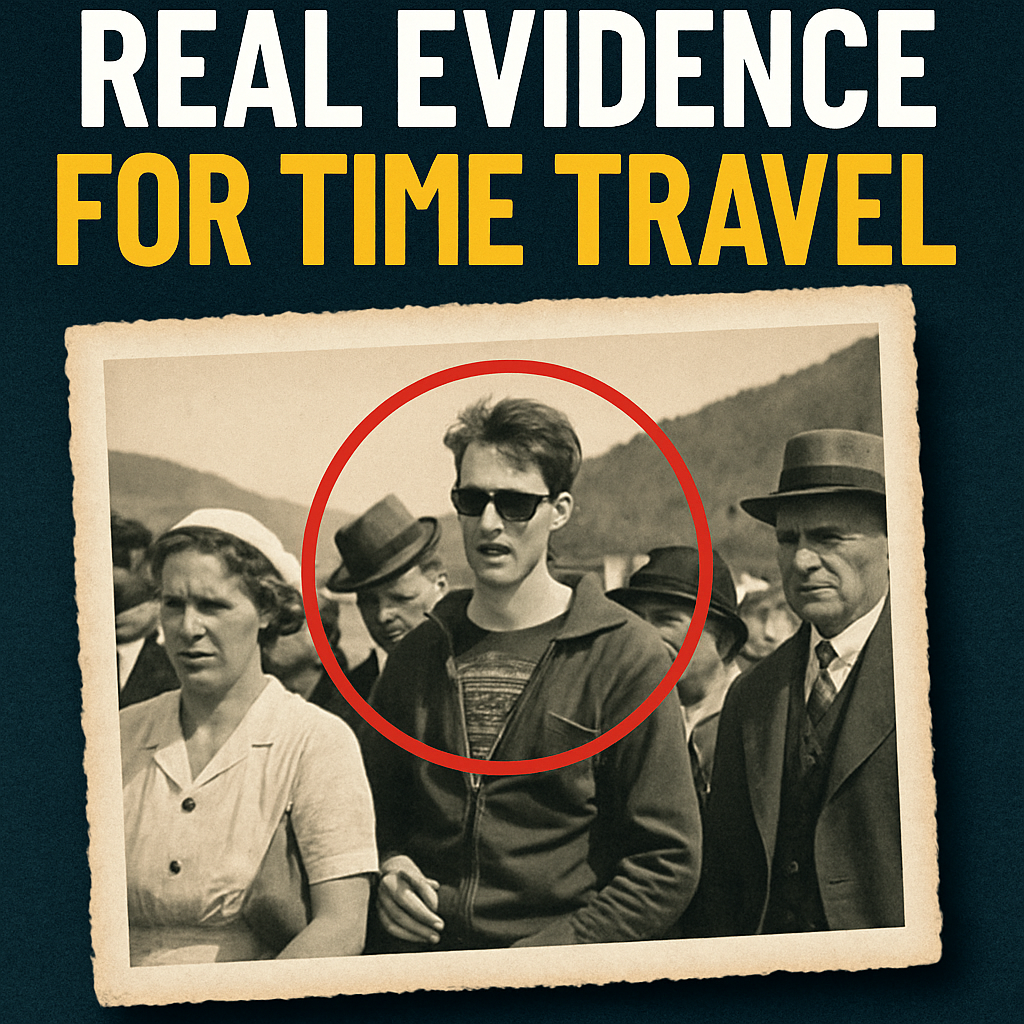
Real Evidence for Time Travel: The Cosmic Dance of the Stars
The universe is vast, filled with billions of stars, each playing its role in the grand cosmic cycle. Among them, the Sun—our nearest star—stands as the provider of life on Earth. It burns with a scorching temperature of 5,778K, fueled by the powerful process of nuclear fusion.
At its core, helium atoms fuse to form hydrogen, releasing an immense amount of energy:
2He3 + 2He3 → 4He2 + 2(1H1) + 17.6 MeV
But like all things in the universe, the Sun has a finite lifespan. One day, its fuel will run out, leading to its inevitable transformation.
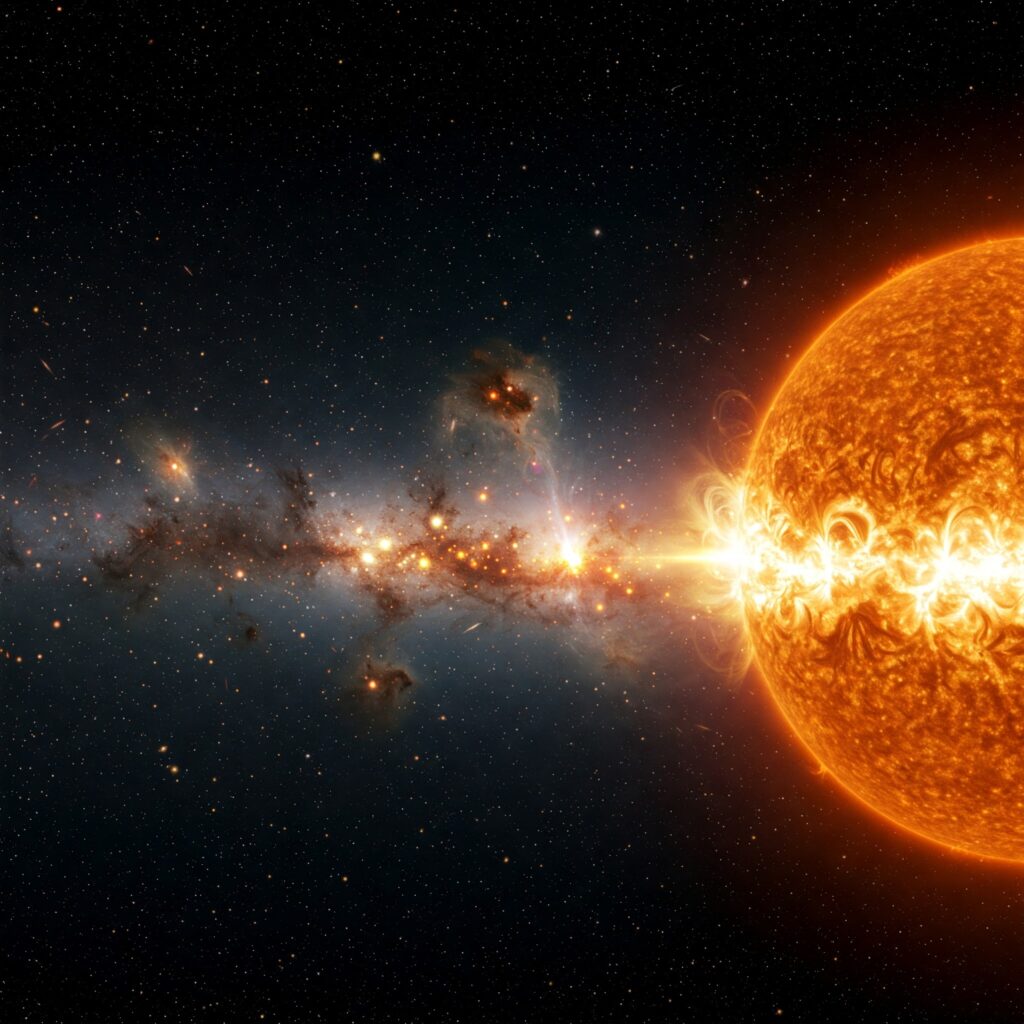
This is an image of a breathtaking view of a vast galaxy filled with billions of stars, with the Sun prominently glowing in the foreground. The Sun’s nuclear fusion process is illustrated with vibrant flares and atomic reactions, showing hydrogen fusing into helium with bursts of radiant energy
Real Evidence for Time Travel: The Death of a Star
When our Sun finally exhausts its hydrogen fuel, its brilliant glow will fade. Unable to sustain the nuclear fires, it will violently collapse under its own immense gravity. Imagine: our star, shrinking dramatically, compressing its vast mass into a core no larger than a peanut.
But this isn’t the quiet end. This incredibly dense remnant becomes a ticking time bomb. The immense pressure inside will ignite unstable atoms, triggering cataclysmic explosions—a supernova so powerful it dwarfs our entire solar system. While this celestial drama unfolds on a scale beyond human comprehension, it ironically offers no Real Evidence for Time Travel. The forces at play are about ultimate destruction and transformation, not journeys through time. The dazzling spectacle of a supernova underscores the universe’s mysteries, pushing us to seek Real Evidence for Time Travel elsewhere in the cosmos.
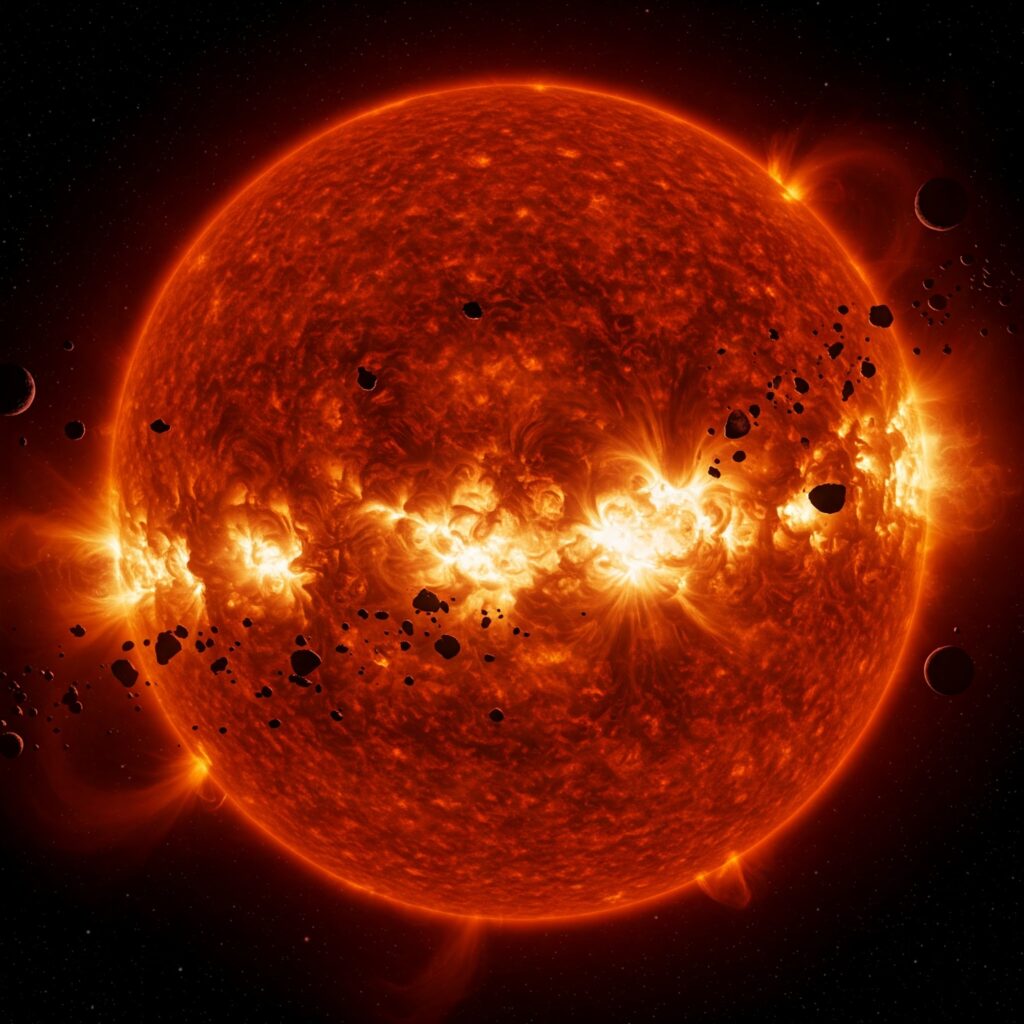
This is how the Sun might look like nearing the end of its life, swelling into a red giant and consuming nearby planets
The Birth of a Black Hole
A supernova’s explosive power isn’t merely destructive; it’s a cosmic forge, birthing new wonders. From the fiery aftermath, an impossibly dense and enigmatic entity can emerge: the black hole. Its gravitational pull is so immense, so inescapable, that even light itself succumbs, vanishing beyond a point of no return. Anything venturing too close is inexorably drawn in, seemingly disappearing into oblivion.
But where do these consumed objects truly go? This profound question fuels speculation about black holes potentially being more than just cosmic devourers. Could their incredible warping of spacetime hide a secret, perhaps offering Real Evidence for Time Travel? The idea that matter could pass through a black hole to another point in time or space remains a tantalizing, unproven theory. The search for Real Evidence for Time Travel continues, forever linked to these mysterious gravitational giants and the secrets they might hold.
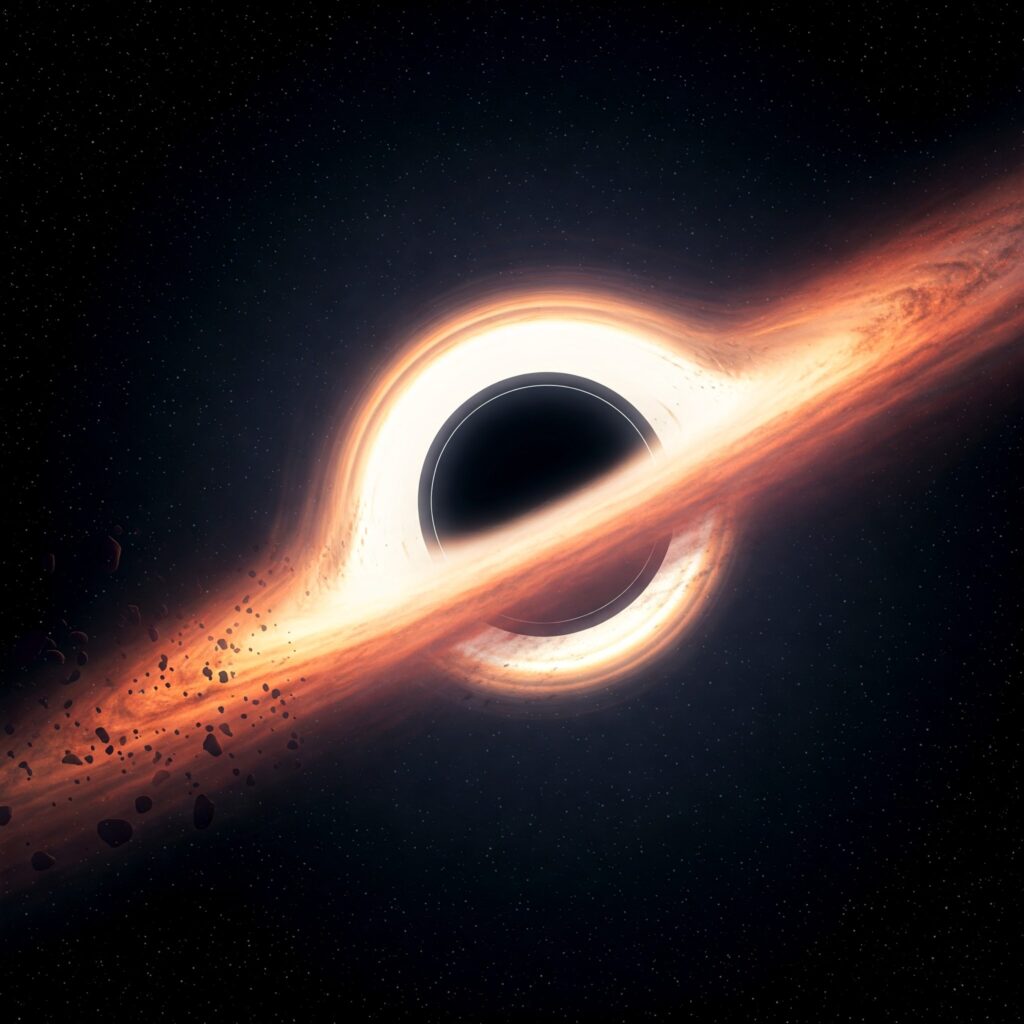
This is an image of massive supernova explosion tearing through space, with bright shockwaves and cosmic debris
The Einstein View
At the heart of our deepest cosmic curiosities lies a profound statement from one of history’s greatest scientific architects,
Albert Einstein: “Any object that travels faster than light will enter another dimension—either into the past or the future.”
This isn’t just a fleeting thought; it’s a revolutionary hint at the very possibility of time travel.
Consider the implications. If Einstein’s hypothesis holds true, and if a black hole possesses the astonishing power to accelerate or bend objects beyond the cosmic speed limit of light, then we’re faced with an incredible proposition. Could the swirling abyss of a black hole, with its immense gravitational pull, actually function as a gateway? Could it be the elusive Real Evidence for Time Travel we’ve been searching for?
The very thought is mind-bending. A black hole wouldn’t merely be a cosmic vacuum cleaner; it would be a cosmic architect, bending the very fabric of reality—space and time itself—in ways we are only beginning to comprehend. The idea that crossing a black hole’s event horizon could transport us to a different epoch, a different moment in history, speaks to the tantalizing possibility of Real Evidence for Time Travel. It compels us to ponder if these celestial behemoths are not just natural wonders, but keys to unlocking the universe’s ultimate secrets, offering the most profound Real Evidence for Time Travel imaginable.
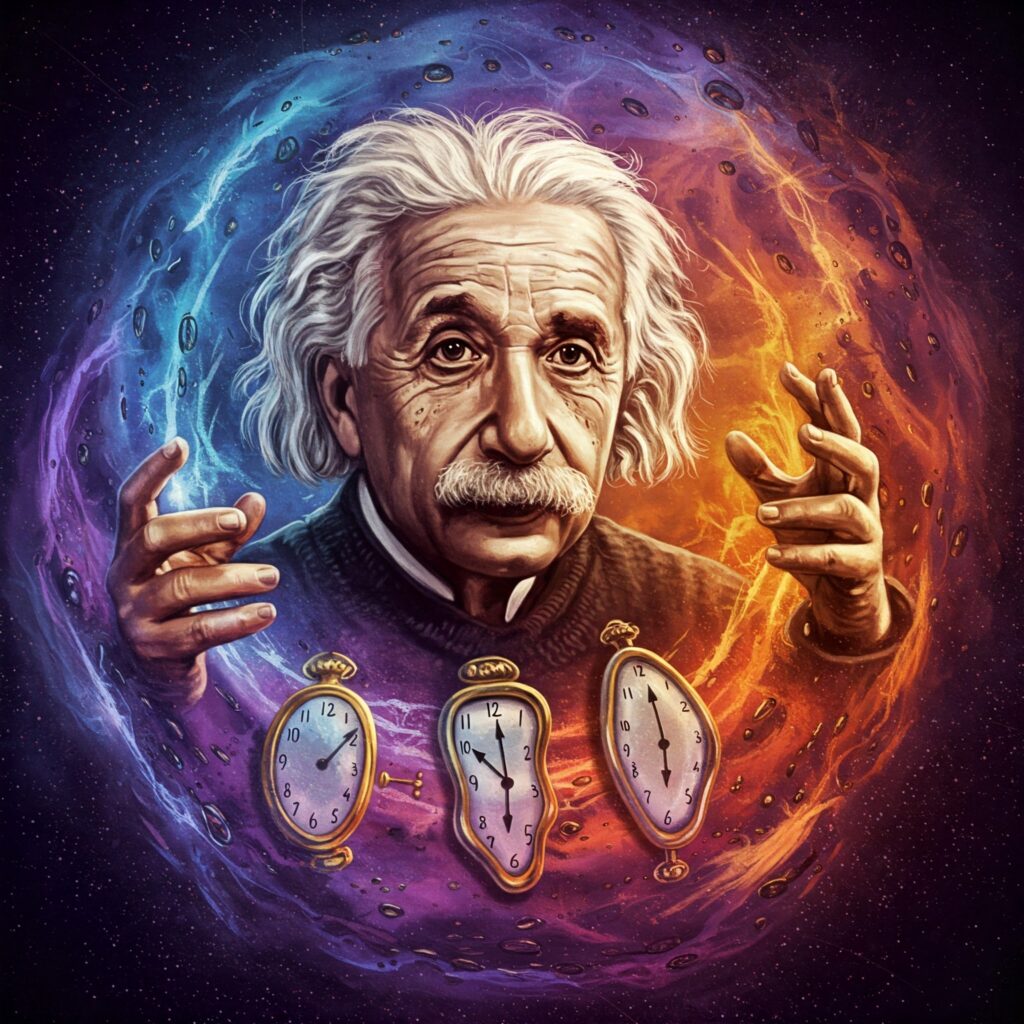
This is a realistic digital image of Albert Einstein demonstrating the concept of time travel
The Mystery of Time Travel
Black holes might be more than cosmic dead ends. When something vanishes into them, it could be a transition, not destruction – perhaps an incredible journey through a hidden pathway: a wormhole. These theoretical shortcuts through spacetime, like a folded sheet of paper pierced through, could transport objects swallowed by a black hole to another point in space, or even time. This could be Real Evidence for Time Travel.
This transforms black holes from mere cosmic vacuum cleaners into potential gateways to the past or future. These enigmatic bodies, far from being just destroyers, might hold the key to the ultimate frontier: Real Evidence for Time Travel. Could future astronauts, with unimaginable courage, one day utilize them to journey through an event horizon and emerge in a different era? The tantalizing possibility of Real Evidence for Time Travel through black holes ignites scientific exploration and philosophical debate, continuously fueling these extraordinary cosmic possibilities.
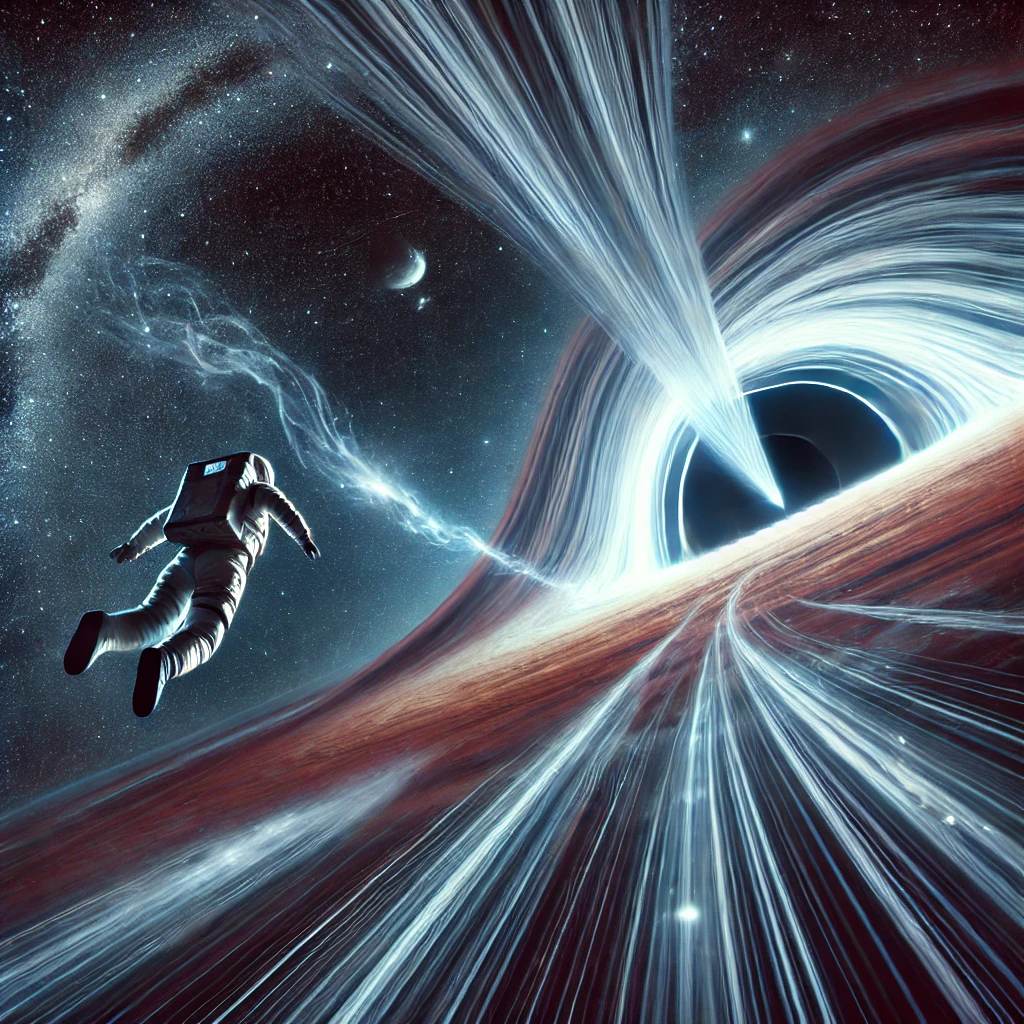
This is the surreal vision of an astronaut drifting toward a black hole’s event horizon, with light bending and a mysterious wormhole hinting at time travel.
Truth or Fake?
Humanity has long been captivated by time travel. While black holes hint at its possibility, Real Evidence for Time Travel remains elusive. Yet, Einstein’s theory of relativity suggests extraordinary discoveries might await.
Are black holes truly cosmic portals to other dimensions or times? Is time travel real, or simply a myth? Scientists relentlessly pursue Real Evidence for Time Travel, pushing the boundaries of what’s known. Our universe, vast and complex, is far more mysterious than we can imagine. The search for Real Evidence for Time Travel is just one frontier of this profound enigma.
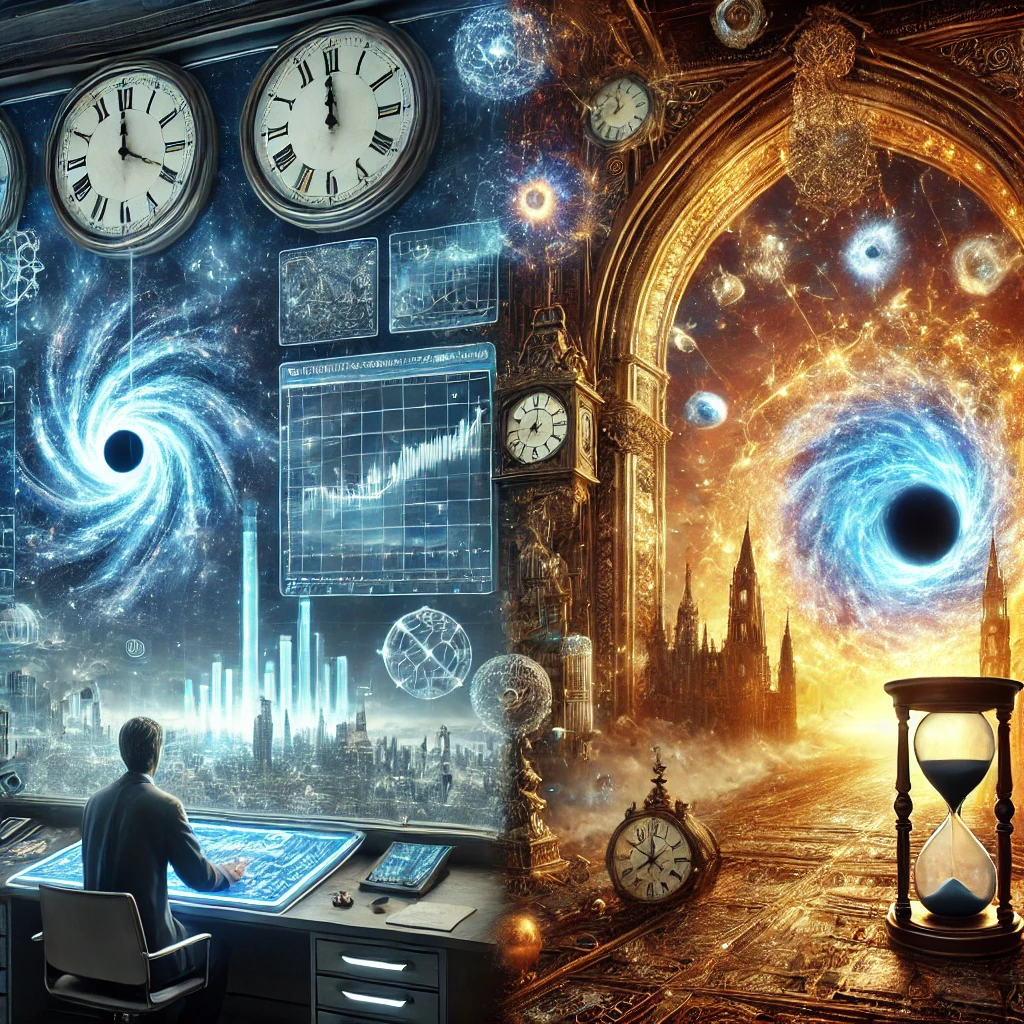
This is the split-image composition showing two contrasting perspectives on time travel—one scientific and the other mystical.
Conclusion: The Future of Exploration
Our understanding of black holes and the profound concept of time travel remains in its earliest stages, akin to a cosmic infancy. Yet, the relentless march of technological advancement offers a beacon of hope. We envision a future where sophisticated instruments and daring missions might finally pierce the veil of secrecy shrouding these cosmic enigmas, potentially revealing Real Evidence for Time Travel.
Until that momentous day arrives, our journey is one of continuous wonder. We continue to dream of temporal voyages, to explore the theoretical landscapes of warped spacetime, and to relentlessly question the very nature of existence itself. The quest for Real Evidence for Time Travel isn’t just a scientific endeavor; it’s a testament to humanity’s boundless curiosity. The universe, in its vastness, patiently guards its deepest secrets, but our innate drive to unravel them, especially the tantalizing prospect of Real Evidence for Time Travel, propels us ever forward.
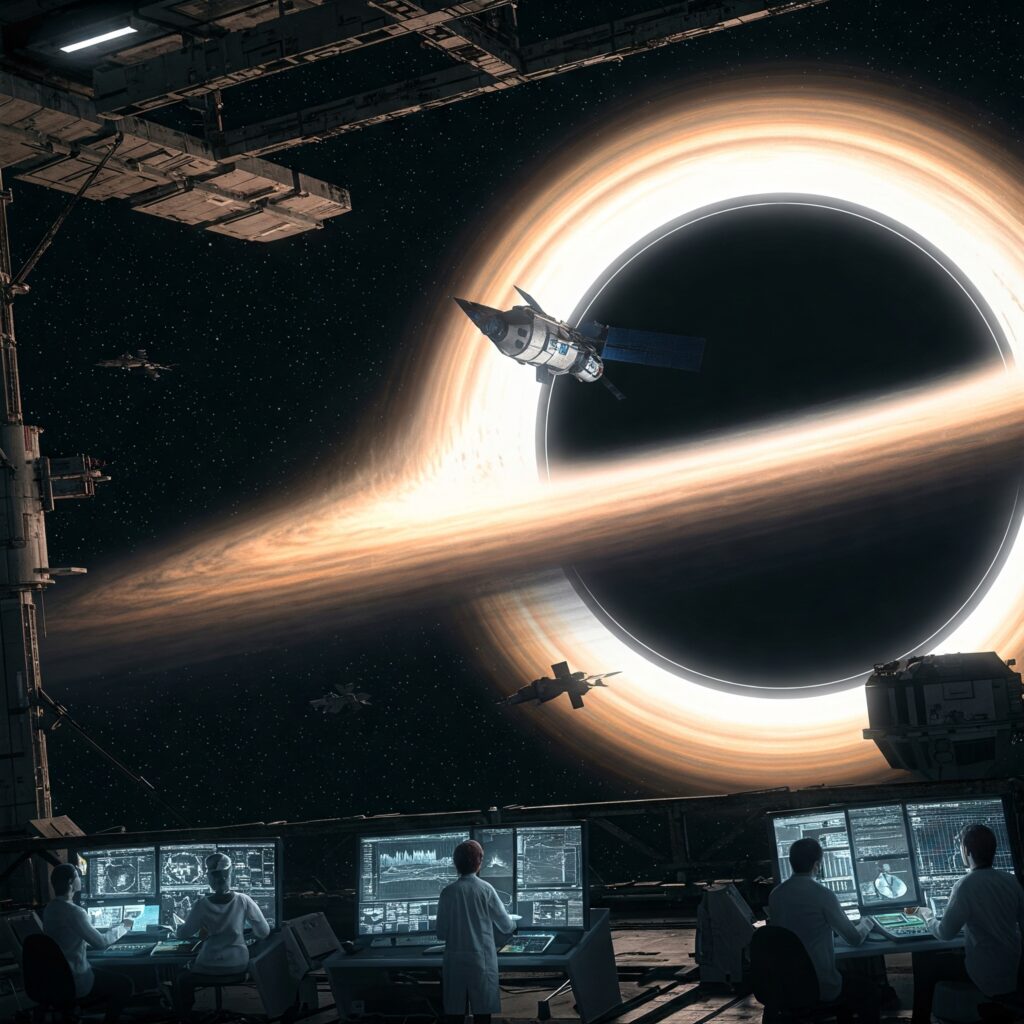
This is the image of a futuristic space station orbiting a black hole, with scientists analyzing data and spacecraft preparing for a daring mission.
Is time travel truth or fake? The answer may be waiting for us among the stars.
Feel free to refer my another science articles like Does-god-really-exist.
Disclaimer: The contents of this page may not be correct and are provided for informational purposes only. They should not be considered as professional advice or recommendations. Users are encouraged to verify the information independently before relying on it. The author disclaims any liability for any errors or omissions in the information provided.
uvjdfwesnlojswljnewyemnehptghw